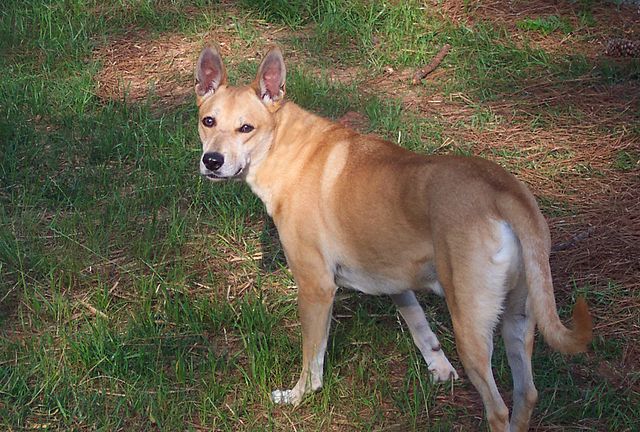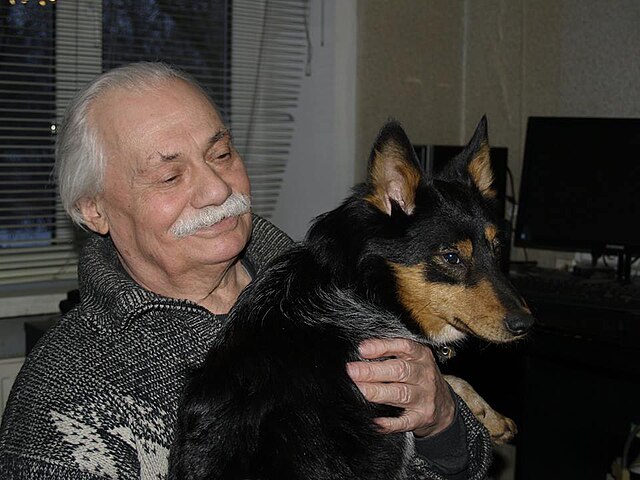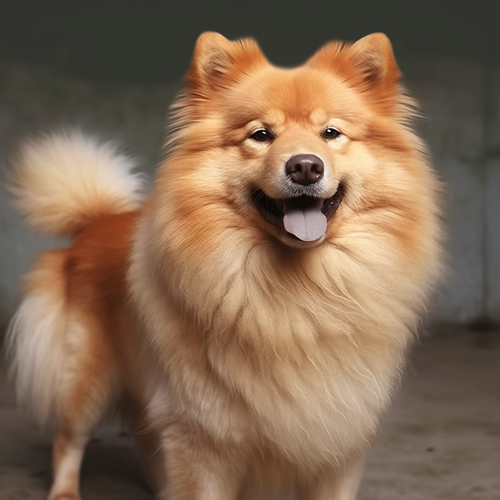The Carolina Dog is an ancient breed that probably descended from semi-domesticated Asian wolves. This pariah-type breed keeps it’s primitive temperament and attitude – they have never been bred for an actual function and instead came about through natural selection. In fact many individuals can still be found in the wild in several parts of the United States! This said, domesticated individuals can make a good pet in the right situations. The breed is very autonomous and can be reserved with strangers, but will become a faithful and loyal companion to those who he comes to trust. Once a Carolina Dog accepts you, it says much about your character.
Carolinas as pets tend to make good watch dogs, which was probably their early purpose when they hung out around human camps. Extremely suspicious of unfamiliar people entering the property, they will bark to send the alarm. They also tend to survey their properties with keen alertness – especially when outside. When nobody is around, they are quiet and unassuming. Despite their watchdog abilities, this really isn’t an aggressive dog and is more of a sensitive alarm system than a full-on attack dog.
The Carolina Dog has a number of interesting traits, many of them having to do with his primitive nature. First, they have a firmer pack mentality than other breeds. They expect all members of the pack to follow “pack rules” and many require at least one other dog in the family to be truly happy. Second, unlike many other breeds, females go into heat only once a year instead of the usual two – and when a litter is born the sire (father) of the litter will often help his mate care for the puppies. They hunt in packs and signal to each other with body language as they do so. Finally, an interesting yet unusual behavior found in the Carolina – they tend to dig what are called “snout pits” in the sand. Normally dug by females in the fall and winter, these snout pits perfectly fit the dog’s muzzle.
Perhaps surprisingly, the Carolina can be easy to train in “the basics” as he loves to please his owner. This said, like most primitive breeds, if he doesn’t see the point to doing obedience (particularly more advanced stuff and/or sessions that are too long/repetitive/boring), training can be difficult. Treats and food may or may not interest him so an owner might need to find an alternate motivator. Also of note – this intelligent breed does have a prey drive, so be aware of training around heavy distractions such as scampering critters! Make sure you teach initial sessions with little to no distractions until the dog knows the commands before you begin to proof the dog outside when prey animals might be near.
Carolina Dogs are medium sized although there can be a number of different builds, from lean and athletic to fairly stocky. The variation in appearance can be explained by the fact that, up to very recently they were not bred by humans as much as they bred themselves in the wild. They are now recognized by a couple of kennel clubs so breeders have a standard for which they must conform to, although the standard is looser than many other breeds and the stud book is currently open (which means puppies can be registered even if there parents are not). Certain traits that are important to the breed include a narrow, wolf-like face, prick ears and a tail with a fishhook shape at the tip.
Carolinas are not super active dogs and instead have a low-moderate energy level. They do still need regular exercise like all breeds although nothing extreme is required. Their grooming requirements are similarly low. The short smooth coat requires little brushing or bathing, and they even tend to groom themselves like cats to stay clean. Finally, the breed is very healthy on the whole and most don’t require expensive vet visits for genetic health problems. Dogs that were unhealthy usually died quickly in the wild and so selection of the fittest ensured a great gene pool!




